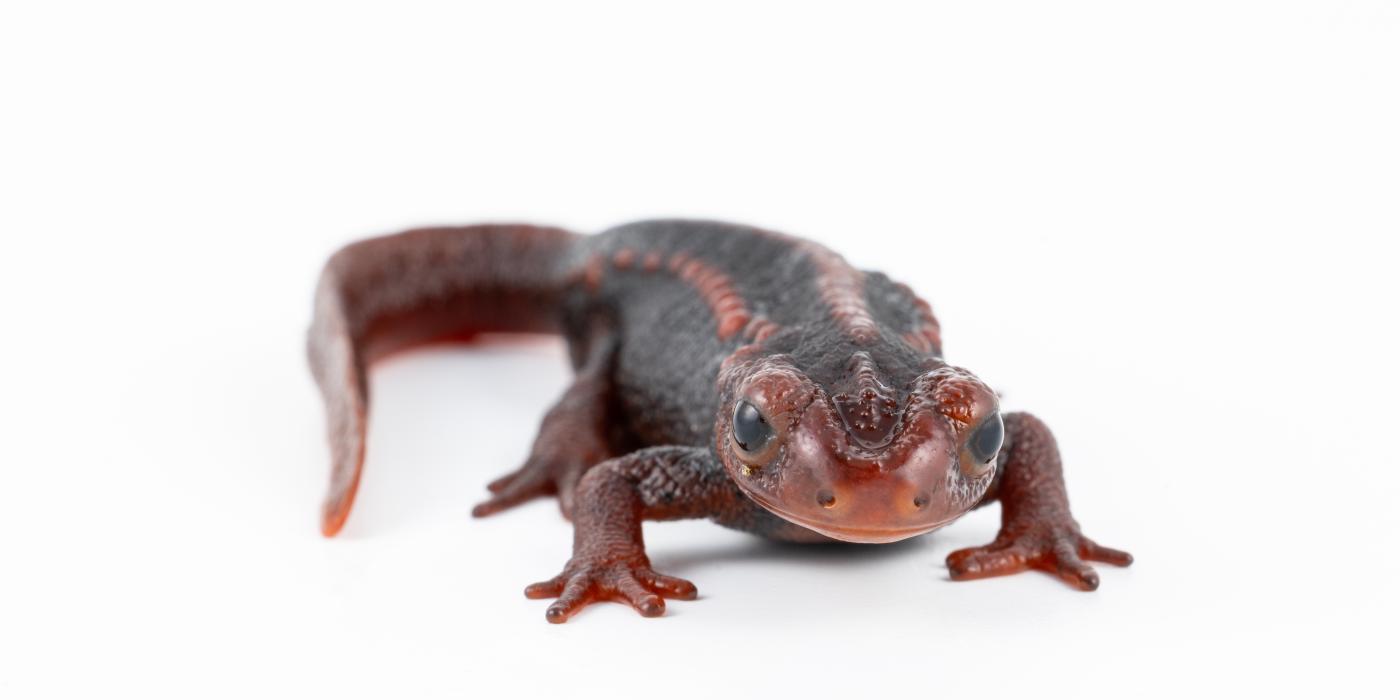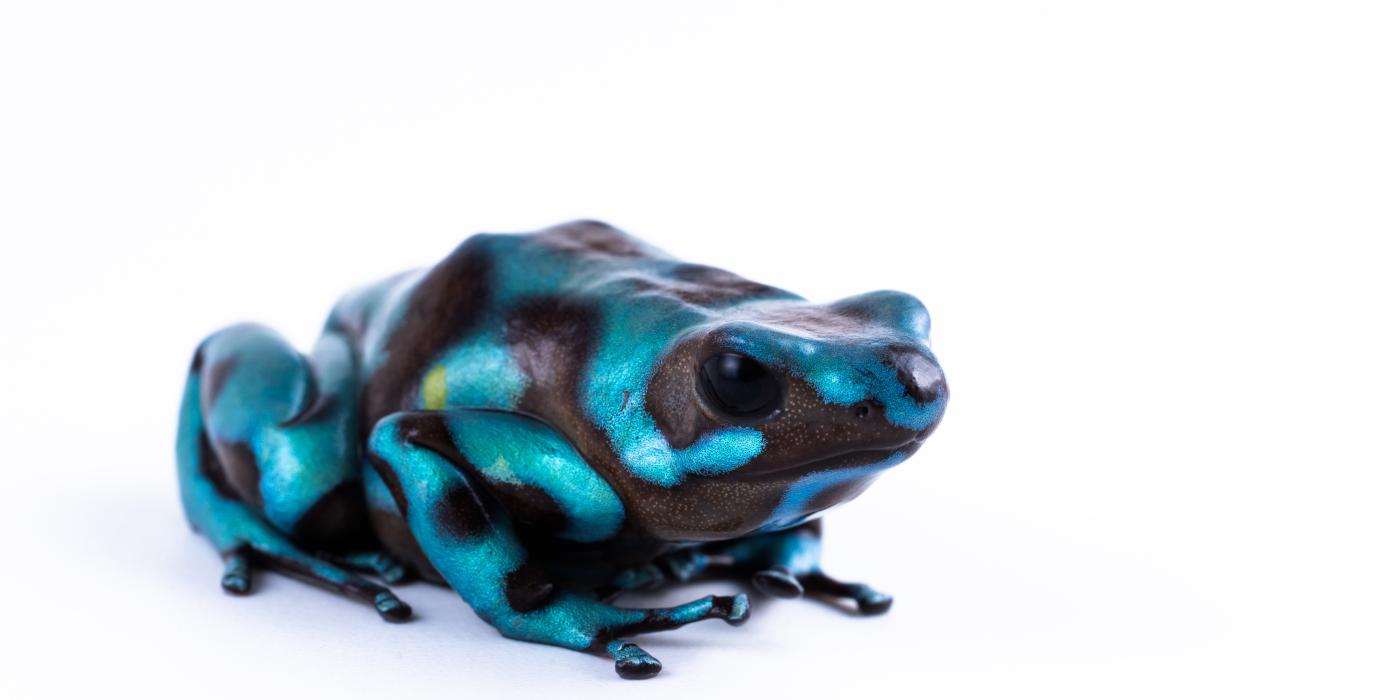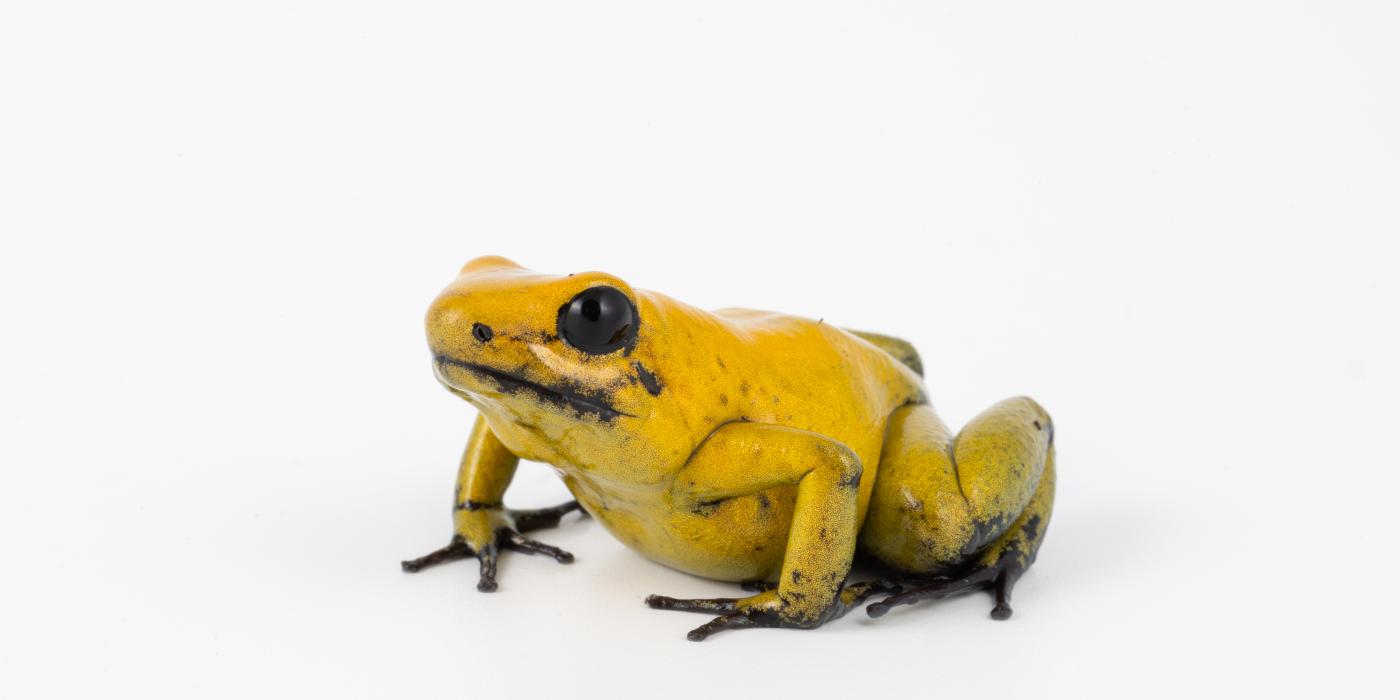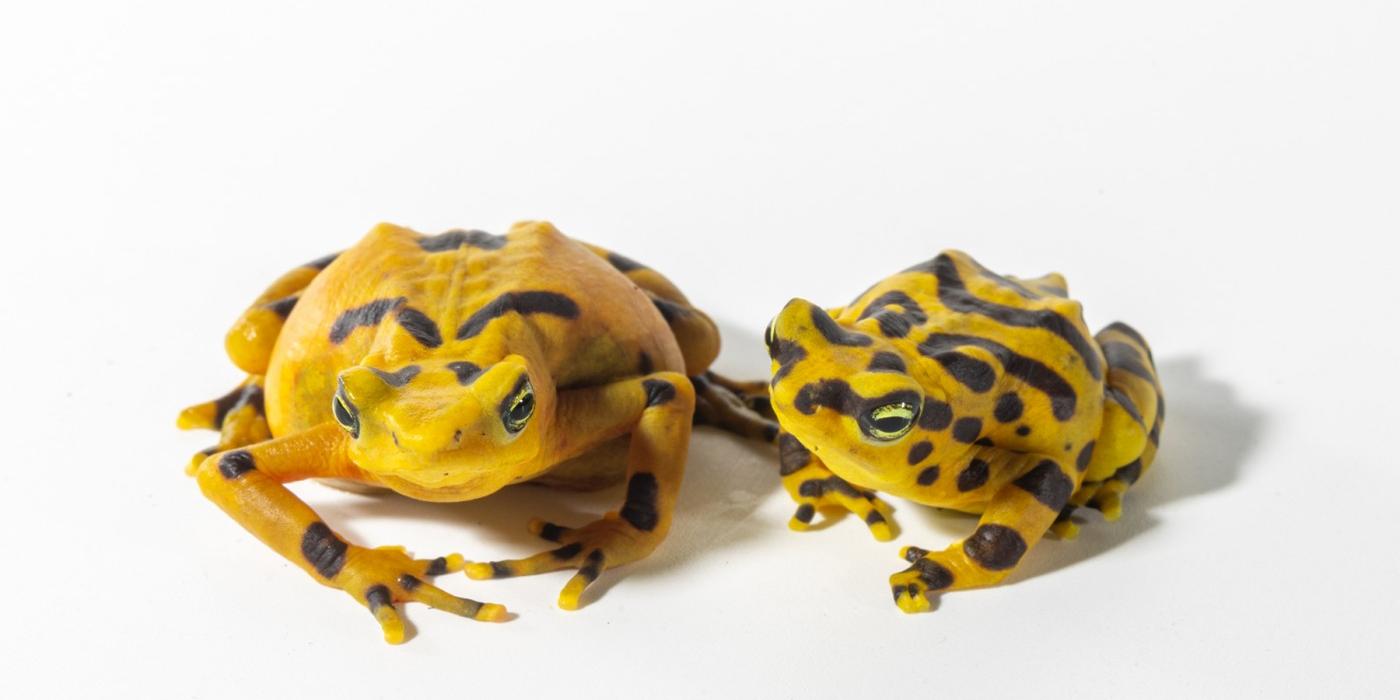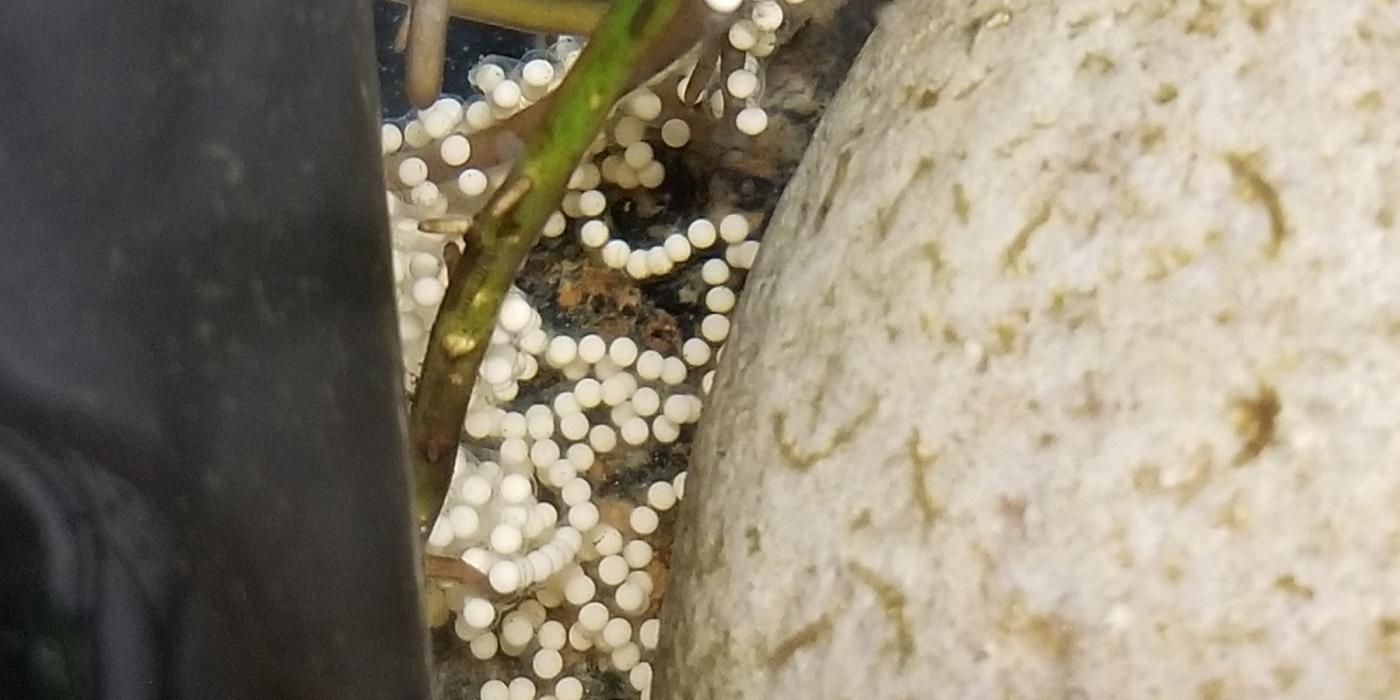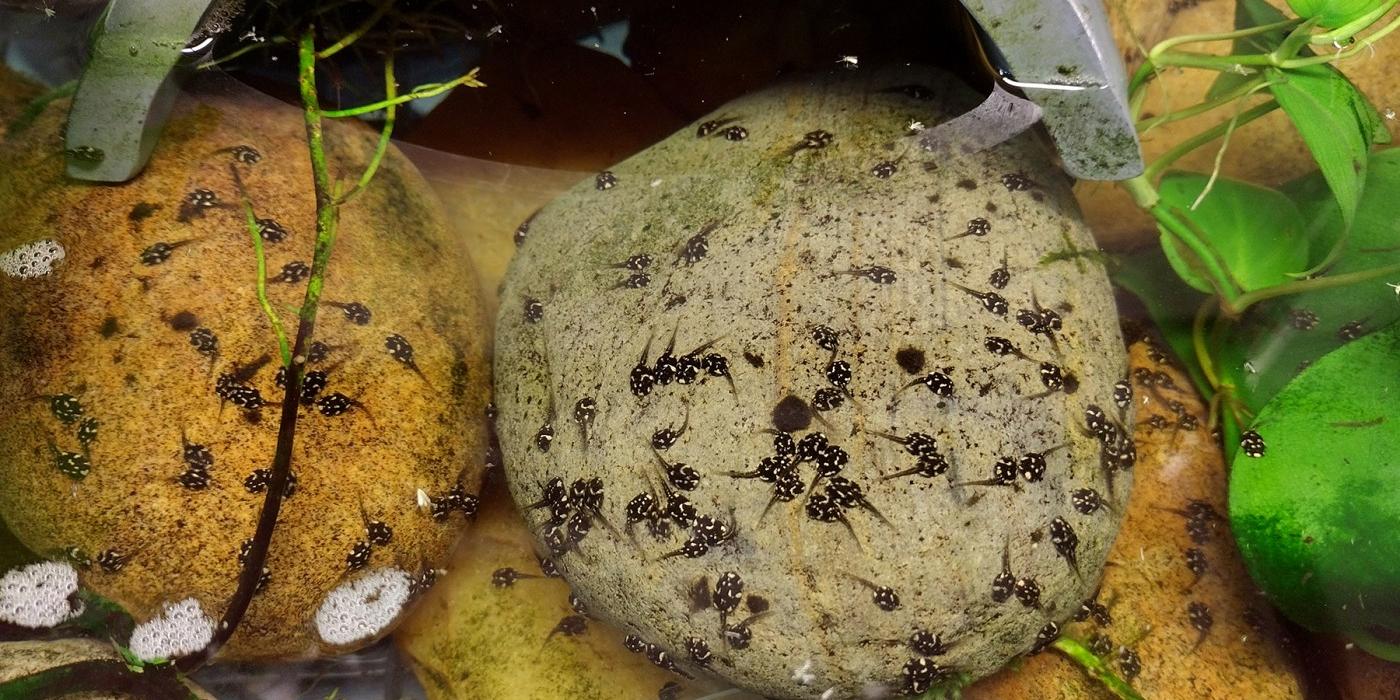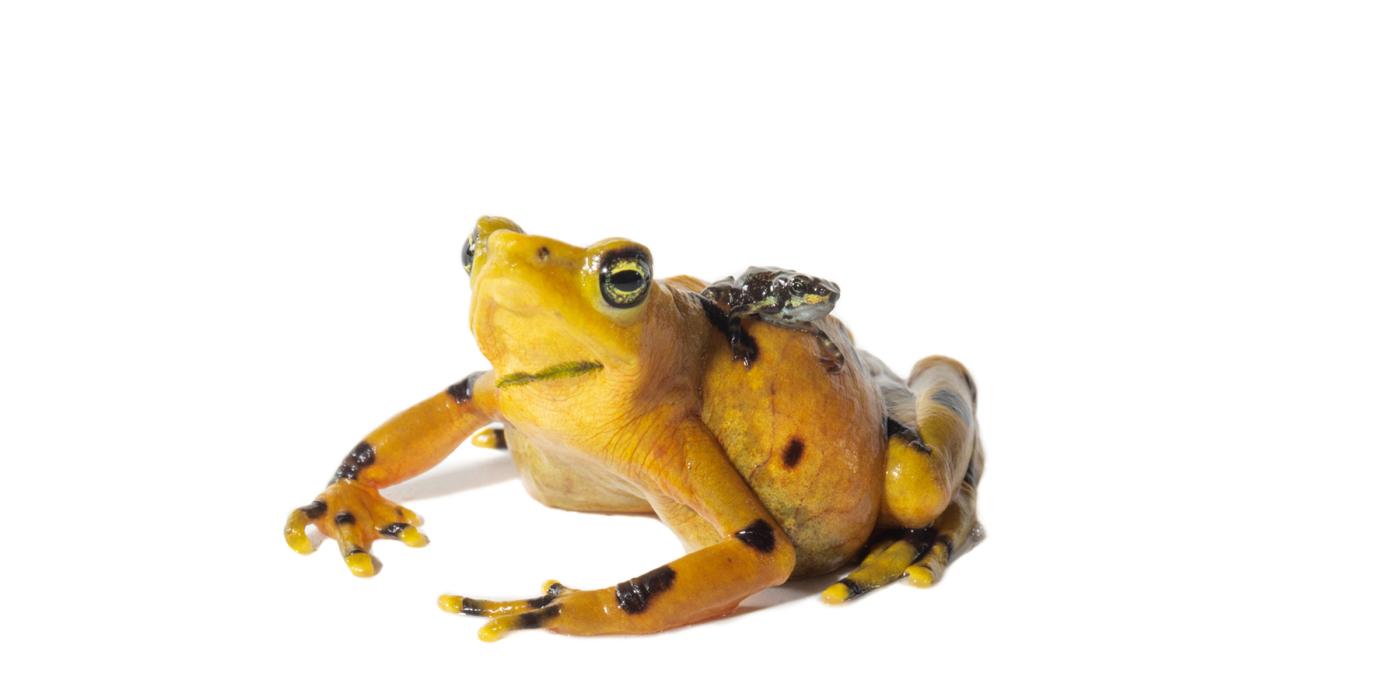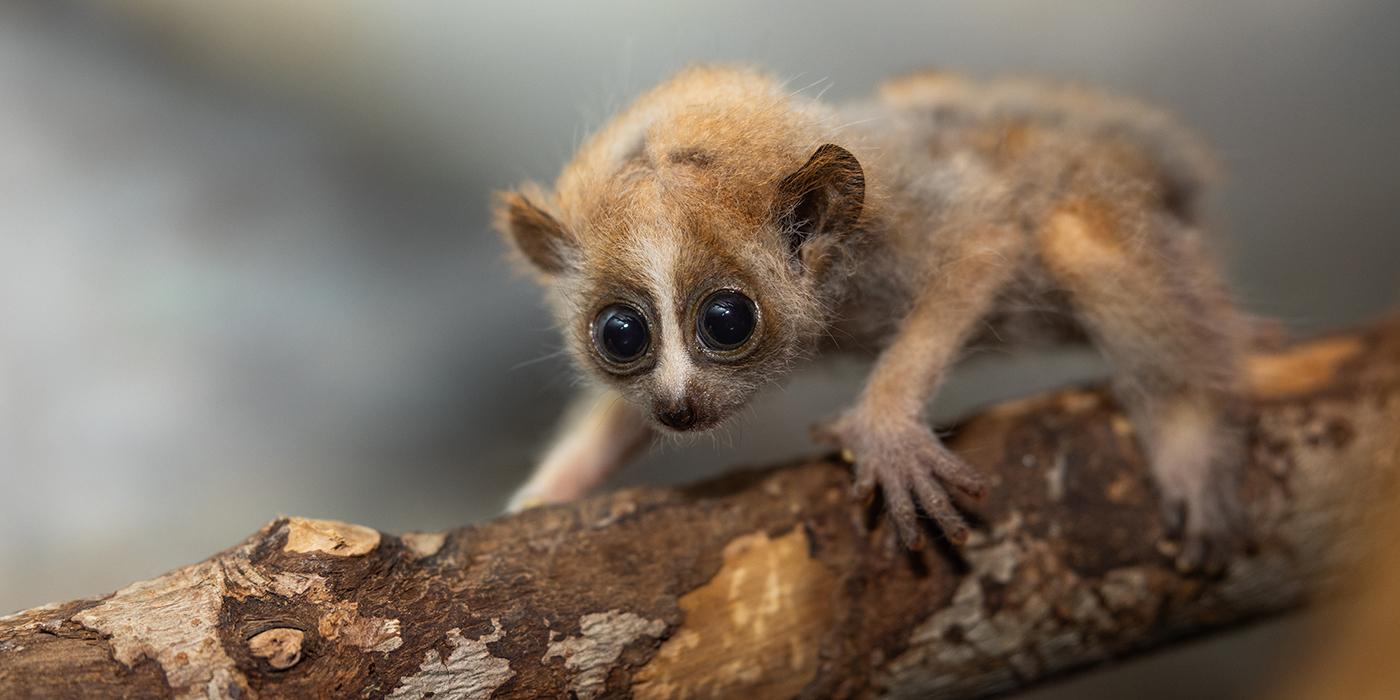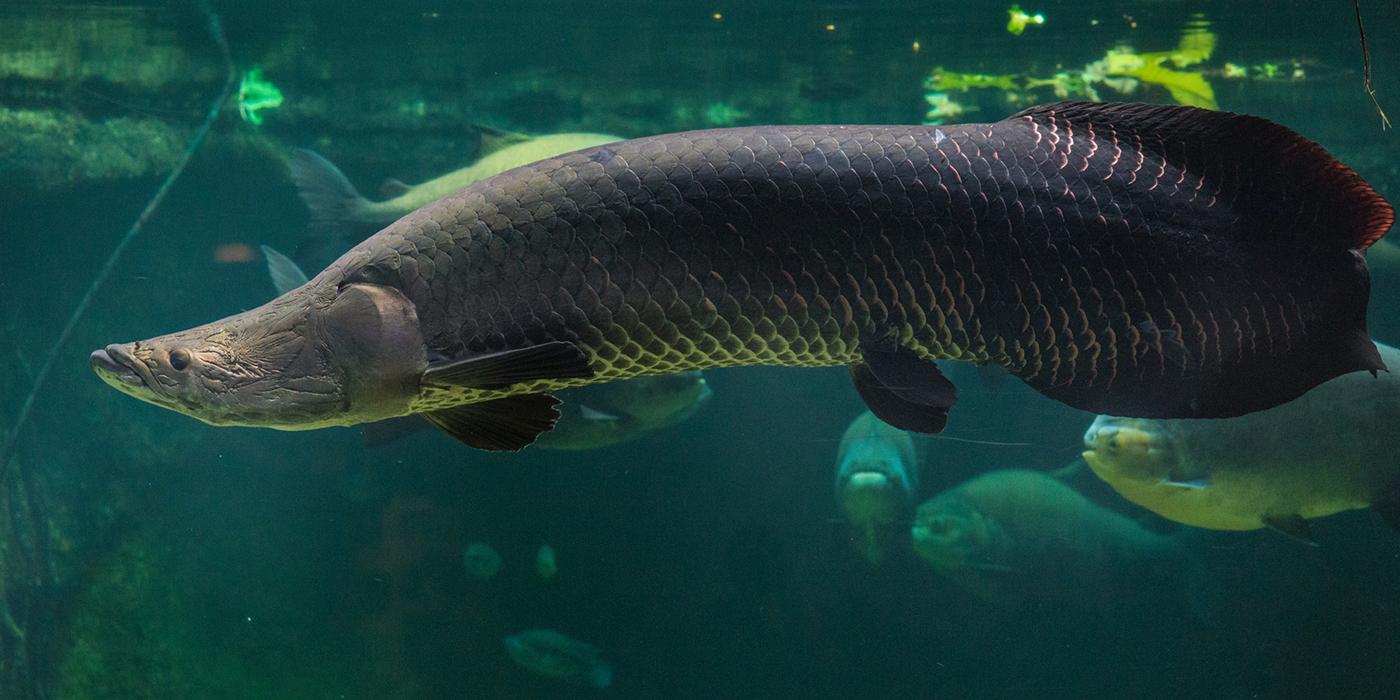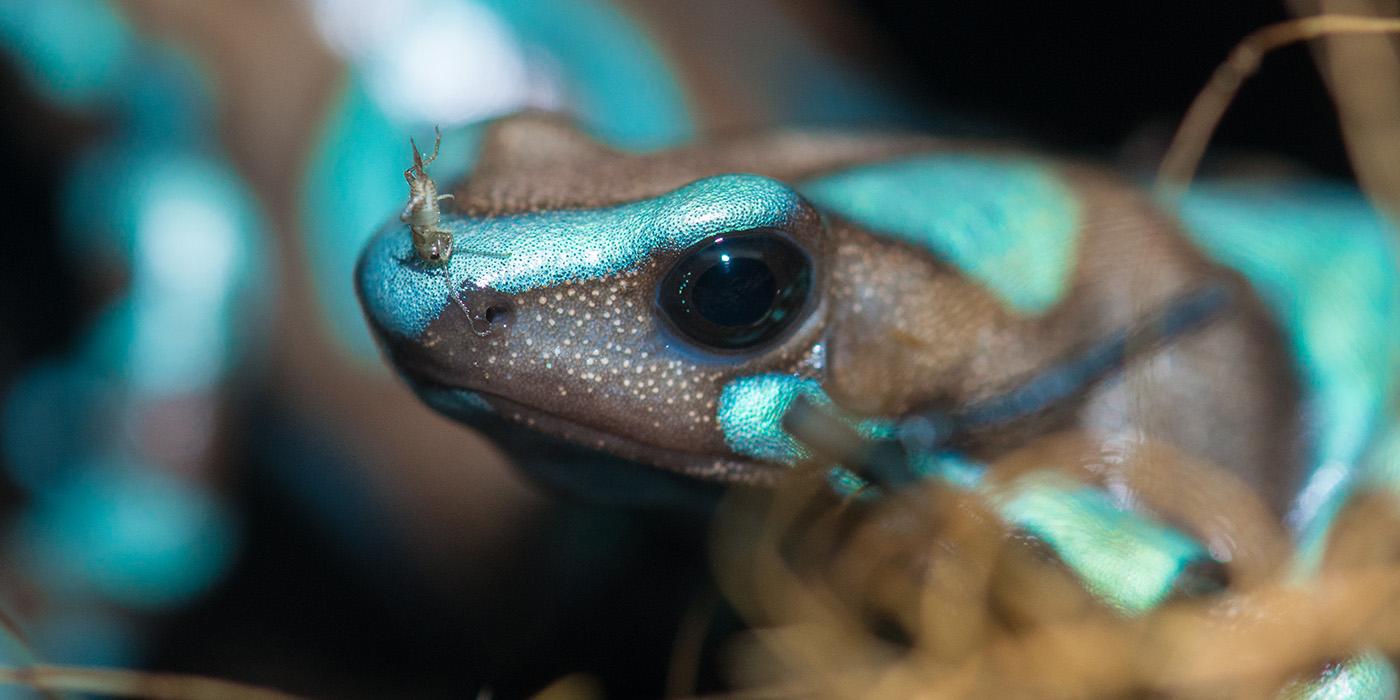Happy Amphibian Week 2025
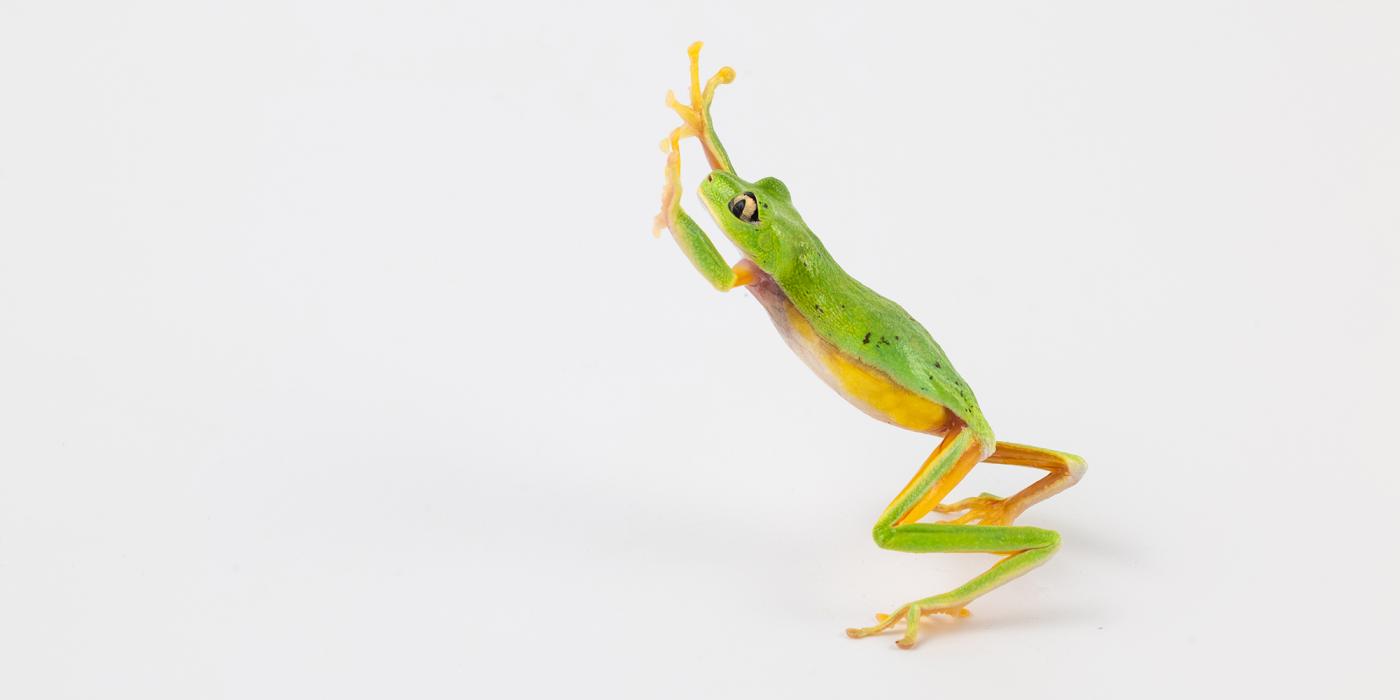
Have you ever strolled past an animal’s enclosure at the Zoo, thinking it was empty? Chances are, you were fooled by a creature whose camouflage allows it to seamlessly blend into its environment. Many of these “masters of disguise” are amphibians—animals that live part of their lives in the water, and part of their lives on land.
From frogs and toads to newts, salamanders and caecilians, amphibians have some of the most amazing adaptations and abilities in the animal kingdom. This Amphibian Week, take a closer look at what makes these species so wonderfully weird and worthy of our attention.
Join the celebration onsite and online! Don't miss Amphibian Day at the Reptile Discovery Center on May 4 from 10 a.m. to 2 p.m. And, tune into our Discovering Amphibians webinar May 7 at 2 p.m. Let’s dive in!
In this virtual keeper chat, get tips on how to spot our Appalachian salamanders from Reptile Discovery Center keeper Sara Hasenstab!
May 3 | Salamander Saturday
Many salamanders are ambush predators. The bigger, bulkier species tend to lunge at prey. Smaller species—including long-tailed salamanders and cave salamanders—have a different strategy.
With prey in its sights, a salamander quickly contracts its muscles, causing the hyoid bone in its mouth to protrude. In the blink of an eye, the salamander’s elongated, sticky tongue has secured its meal. The northern red salamander can extend and withdraw its tongue in just 11 milliseconds!
When scientists are trying to conserve a species, it's critical for them to know how many of those animals are living in the world. But when you're considering creatures like red-backed salamanders — which spend a lot of time underground — how would you try to count them?
It turns out, you need tiny "tattoos" and a lot of hands.
By counting the ratio of marked to unmarked salamanders in a designated plot, researchers can determine how many salamanders are in an entire forest! The Smithsonian is part of the Salamander Population & Adaptation Research Collaboration Network (SPARCnet), a group of scientists and educators that studies how different salamander populations are faring across North America. Together, SPARCnet monitors how climate change and land use may impact salamanders.
Although eastern newts are aquatic as larvae and adults, juveniles (called red efts) live on land! Around 2 to 5 months of age, their lungs, legs and eyelids make them more suited to life on land. As they search for water, they make their homes in leaf litter along the way.
May 4 | All About Amphibians
We asked our animal care team to share some of their favorite facts about amphibians. Here’s what they said!
Vietnamese mossy frogs are truly masters of camouflage! Looking at them from a distance, it’s very difficult to distinguish them from a clump of moss. And, their defense mechanism is very unique. When they are nervous or frightened, they will curl up into a ball and plop into the water below to escape from harm’s way.
One of the coolest things about salamanders is that most of them have the ability to regenerate body parts—including limbs, tails, eye tissue and even brain tissue. By studying how the salamanders’ macrophages are able to repair and regenerate so effectively, scientists can take what they learn and apply it to human medicine. In future, what we learn could help those who have lost limbs or are battling Alzheimer’s disease.
Have you ever wondered what the difference between a reptile and amphibian is? Well, if you’ve ever picked up a frog or touched a lizard, you may have noticed they feel different. Skin texture is a key difference between reptiles and amphibians. Reptiles typically have rough and scaly skin while amphibians have moist and slimy skin. This moist and slimy skin is how amphibians, frogs, salamanders and caecilians breathe—some don’t even have lungs at all! So, the sliminess on amphibians is more than just goop; it’s basically how these animals survive.
Many poisonous frogs have bright colors—yellow, red or blue—that warn predators that they might be harmful to eat. In the wild, some poisonous frogs acquire their toxins from the food they eat, including ants, termites and mites. They can consume these insects because they have unique genetic mutations that prevent the toxins from harming them. As the frogs digest their meal, the toxins aren’t broken down. Rather, they wind up in the granular glands just below the surface of their skin. When a frog feels threatened, it secretes a milky white substance containing these toxins. Many of the frogs’ predators—birds, snakes, scorpions and spiders—don’t have resistance to these toxins. So, when they try to eat a poisonous frog, it’s going to taste just awful to them. Depending on what the toxin is, it could also make the predator sick or even cause its death in rare cases.
May 5 | Migration Monday: Meet Me at the Vernal Pool
April showers don’t just bring May flowers—they also help amphibians on the move! Seasonal rains create vernal pools—shallow, natural forming ponds. Many frogs, toads, salamanders and newts use these temporary habitats to breed and find new homes. Because these wetlands are woven into the life cycles of amphibians, the absence of a vernal pool can result in fewer frogs, toads and salamanders in that area.
Vernal pools only hold water for a portion of the year. While amphibian eggs may be safe from fish in this habitat, other amphibians like red-spotted newts, or even reptiles like snapping turtles, will forage in a vernal pool and snack on newly laid eggs.
Hundreds of species of microorganisms—including fairy shrimp, daphnia and insect larvae—live in vernal pools year-round. Many of these tiny animals have the ability to go dormant (physically slow down) when the wetland dries in late summer and re-awaken when the pool fills in springtime—just in time to be eaten by those hatching tadpoles and froglets.
Amphibians are critical to the food chain; healthy population of amphibians keeps insect populations in check, and larger animals rely on these amphibians as their food sources. Balanced animal populations keep forests healthy, and forests benefit all life on Earth.
Lean more about the hidden life in vernal pools!
May 6 | Transformation Tuesday: From Tadpoles to Toadlets
Frogs and toads that are native to the Washington, D.C., area, usually metamorphize from tadpole to froglet in the span of a month or two. But Atelopus species, including Panamanian golden frogs, take much longer—about five months!
In the wild, female Panamanian golden frogs live in the forest, and males live around fast-flowing streams and waterfalls. The rainy season triggers a female to come down to the stream, where she finds a male. When choosing where to lay her eggs, she picks a spot in a calm eddy or pool. Then, she finds a dark crevice and lays hundreds of eggs in one long string. As she lays each egg, the male fertilizes it.
When Panamanian golden frogs hatched at the Zoo, the female laid eggs Oct. 18, 2022. After about a week, the color of the eggs changed from light to dark. Those were the tadpoles forming inside! On Oct. 27, some started to hatch. Another seven days passed before those began swimming Nov. 3. Nearly 5 months later, on Mar. 24, 2023, keepers observed the first front legs forming. Two weeks later, on April 7, the first metamorphs emerged from the water as toadlets!
When they first morph out, toadlets are mostly black. They first start to get color on their legs and feet—beautiful and vibrant shades of green, red and orange that is perfect camouflage among the rocks, moss and leaf litter. Around 6 months, they start to turn their signature yellow and the black “X” pattern (or a variation of it) develops on their back.
Bonus Fun Fact: How can you tell adult male and female Panamanian golden frogs apart? By their size! Males are about half the size of females, and also half the weight—3 to 4 grams versus 8 to 9 grams. Males are fully grown in about a year. Females, because they are bigger, take a little longer to reach adult size, around 1.5 to 2 years.
Meet our caecilians and Amazonia keeper Mike Kirby in this virtual animal demo!
May 7 | Wild Wednesday: Meet Our Wiggly and Wonderful Caecilians
With a sleek, eel-like body and beady eyes, the aquatic caecilian is quite an unusual amphibian. They look like a cross between a snake and an eel, but they are neither. Just like frogs and salamanders, caecilians are amphibians. They are native to the Amazon River Basin in South America and spend their entire lives in the water.
There are some key differences between caecilians and other species of amphibians. Many amphibians can exchange oxygen through their skin via a specialized membrane, but caecilians do not. Their skin is quite thick, and they must come to the surface to take breaths of air. Juveniles take breaths more frequently, about every five to 10 minutes. Adults, however, can hold their breath between 20 to 30 minutes at a time.
Want to help amphibians? Pay attention to where the goods you purchase come from. When you avoid goods that are produced by excessive agricultural practices (such as clear-cutting of forests), you help preserve the sensitive habitats amphibians call home.
Meet one of our Japanese giant salamanders, Hiro, and Reptile Discovery Center keeper Kyle Miller in this virtual animal demo!
May 8 | Throwback Thursday: Meet an Ancient Amphibian, the Japanese Giant Salamander
People think of amphibians as delicate, but Japanese giant salamanders are very tough and resilient. Japanese giant salamanders are the second-largest salamander species in the world. They can get up to 5 feet long and weigh 55 pounds. They can even lose limbs and recover just fine, even though their limbs won’t grow back.
In the wild, Japanese giant salamanders primarily feed on fish and crustaceans, as well as smaller amphibians. There have also been records of them eating small mammals, so they are very opportunistic feeders and have a voracious appetite. If something is the right size and swims in front of them, they will go after it. They have terrible vision, so they count on their sensory organs. Their bodies are covered in tubercles that help them sense their way around and pick up on the movement of prey. They have a good sense of smell as well.
May 9 | Amphibians at the Edge
Panamanian golden frogs are the pride of Panama. Sadly, they are extinct in the wild. The deadly amphibian disease chytridiomycosis (chytrid) has devastated frog populations across the world, and Central American species have been hit especially hard.
How do frogs become infected? The chytrid fungus starts out as a swimming zoospore — think of it like a microscopic tadpole. It smells out the frog’s skin, burrows into it, and begins to grow.
A frog’s skin is unique. Unlike our skin, which acts like a barrier, frog skin is much more permeable to the environment. When the chytrid fungus infects the frog’s skin, it mucks up its ability to drink, exchange ions and function properly.
For frog species that are not resistant to this disease, it infects their skin and ultimately leads to a heart attack, killing them. When that spore has fed off of the frog, it will produce its own fruiting body, and the cycle begins again.
Smithsonian scientists at the National Zoo and Conservation Biology Institute and Tropical Research Institute, along with global partners, are working around the clock to find solutions to the chytrid crisis. Head over to Wild Hope and watch “The Frog Ark” to learn how scientists are fighting for a future for frogs.
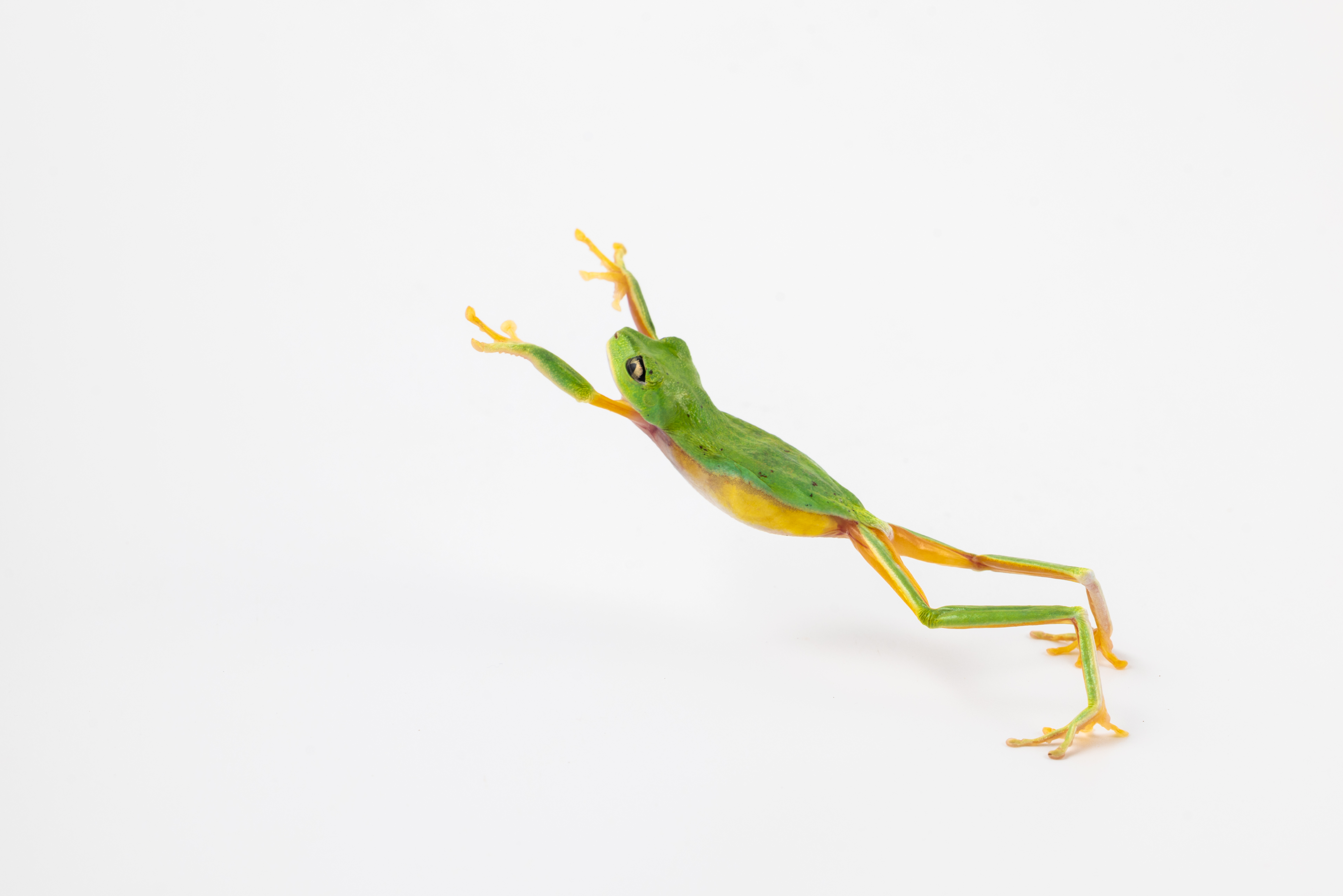
Lemur leaf frog. Roshan Patel/Smithsonian
May 10 | Actions for Amphibians
Saving amphibians takes a dedicated animal care team, cutting-edge conservation research and people like YOU! Get tips on how to help frogs, toads, salamanders, newts and caecilians from our experts. Hop to it!
- Keep habitats clean. Protecting amphibians means protecting water in our neighborhood. They need pristine conditions to thrive. When caring for your home and lawn, use pesticides and fertilizer sparingly. Excess chemicals can runoff into local waterways and inadvertently make amphibians and the prey they eat ill.
- Reduce, reuse, recycle. Every little bit makes a big difference for wild animals and their habitats, here and abroad.
- Know before you buy. Owning a pet is a commitment for the lifetime of that animal. Amphibians require specific—and sometimes costly—environmental, dietary and enrichment needs. If you can provide these, only purchase pets from reputable organizations. Never buy an animal that was taken from the wild.
- Take a hike (safely). Between hikes, disinfect your footwear to avoid tracking bacteria and fungi that could be harmful to amphibians.
- Volunteer. Classroom education is important, but so is hands-on experience. If you want to work with amphibians, consider interning or volunteering at your local zoo or nature center.
- Support conservation efforts. Our animal experts study amphibian biology, reproduction, disease and ecology. When you shop at the Zoo or make a donation, your dollars support our efforts to save these animals and their habitats.
- Get involved in community science. Catalogue the wildlife you see and record that information for scientists studying them in the wild.
- Share amphibian stories. Tell somebody how excited you are about frogs, toads, newts, salamanders and caecilians—and get them to be excited, too!


